Royal Portrait Museum (어진박물관)
Royal Portrait Museum (어진박물관)
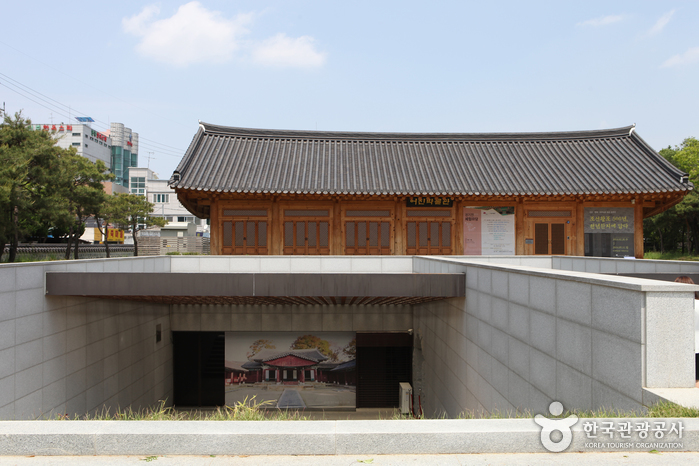 – Homepage
– Homepage
www.eojinmuseum.org (Korean only)
– Tel
+82- 63-231-0090
Opened on November 6, 2010, the Royal Portrait Museum is one of the newest attractions of Jeonju, located within the Gyeonggijeon Shrine. Royal Portrait Museum is a valuable museum as a new tourism resource of Jeonju as well as Gyeonggijeon Shrine and the Portrait of King Taejo, as well as other various high-class exhibitions to preserve, manage, and enhance the glorious cultural assets of Joseon royal family. The museum is comprised of one above-ground level and one underground level with an area of 1,193.71 square meters. The Portrait of King Taejo and six other king’s portraits (Portrait of King Sejong, King Yeongjo, King Jeongjo, King Cheoljong, King Gojong, and King Sunjong) are exhibited on the first floor. The portraits are preserved in temperature- and humidity-controlled cases. In addition, the museum houses History Hall, Palanquin Hall, a planned exhibition hall, resting area, management office and storage room for relics. Palanquin Hall exhibits Hyangjeong (Palanquin for Incense Burner and Case), Sinyeon (Palanquin for Royal Portrait and Palanquin for Mortuary Tablet), Chaeyeo (Palanquin for High Officials), Gagyo (Palanquin for Ritual Items) featuring Korea’s sole preserved palanquin. History Hall houses approximately 80 relices related to Gyeonggijeon Shrine and Jogyeong Shrine, ancestral ritual ceremony, building, and others relics. Since the museum’s opening, it makes continual efforts to become a central place for Jeonju residents to fulfill their cultural feelings. The museum operates various program like exploring famous historic sites in Gyeonggijeon Shrine, hands-on programs such as a guard experience to protect the shrine, and duplicating Gyeonggijeon Shrine’s relics using traditional portrait-making techniques.
– Address : 44, Taejo-ro, Wansan-gu, Jeonju-si, Jeonbuk-do
※ Presentation Information
– Information and Guides
• 1330 Travel Hotline: +82-2-1330
(Korean, English, Japanese, Chinese)
• For more info: +82- 63-231-0090
– Parking
Available (Use nearby parking lot)
– Day Off
New Year’s Day
– Usage Fee
[Admission for Gyeonggijeon Shrine]
Individual: Adults 3,000 won / Teenagers 2,000 won / Children 1,000 won
Group: Adults 2,500 won / Teenagers 1,500 won/ Children 500 won
* No separate admission fare for Royal Portrait Museum
* Free Admission on January 1, Seollal (Lunar New Year’s Day), Independence Movement Day (Mar 1), Chuseok (Korean Thanksgiving Day), Liberation Day (Aug 15), Culture Day (last Wednesday of each month)
– Operating Hours
09:00-19:00
Summer (June-August) 09:00-20:00
Winter (November-February) 09:00-18:00
– Foreign Language Intepretation Services
Japanese (Tuesday / twice a day), English (Friday / twice a day)
* Subject to change depending on situation
* Exhibition guide in foreign language is only available for foreign visitors.
* More information is available on the homepage.
– Info. Services for Koreans
15:00 (Once a day) / 20 minutes
* Subject to change .
* More information is available on the homepage.
◎ Nearby Tourism Infobox
⊙ Han Kook Jib (한국집)
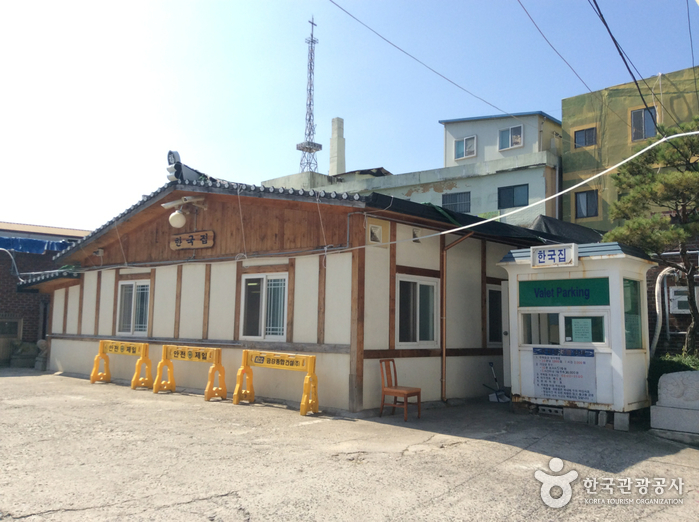
– Tel
+82-63-284-0086, 2224
Opened in 1952, Han Kook Jib has upheld its tradition for three generations. It is housed in a renovated hanok with a beautiful courtyard. Han Kook Jib is conveniently located near major tourist sites in Jeonju, such as Jeonju Hanok Village and Gyeonggijeon Shrine.
⊙ Fine day (좋은날)
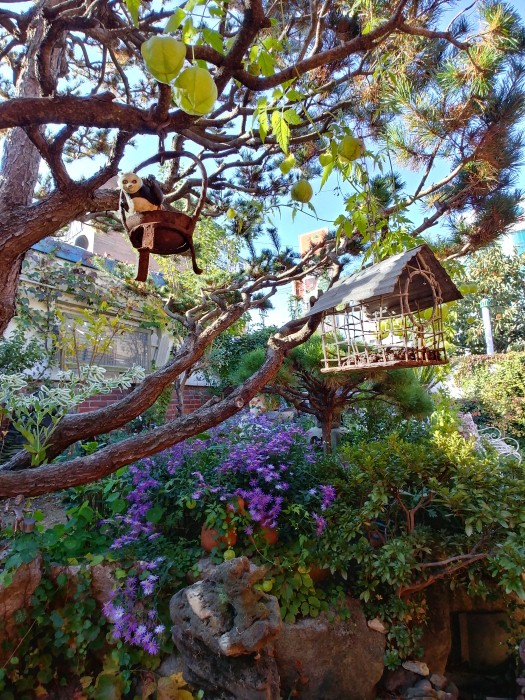
– Tel
+82-10-2607-3326
A Fine Day is a hanok stay on Jeondong Cathedral Street, Jeonju, Jeollabuk-do, which combines hanok tradition with modern convenience. The wood floor and red clay-lined walls and ceilings are a pleasure to wake up to. The rooms are well heated and have toilets, shower booths and bidets. From the wooden porch guests can enjoy a beautiful sunny garden planted with wildflowers and trees. Nearby attractions include Gyeonggijeon, Omokdae, Jeondong Cathedral and Nambu Market (great for food!).
⊙ Gyeonggijeon Shrine (경기전)
View detailed guide on Korea Trip Guide →
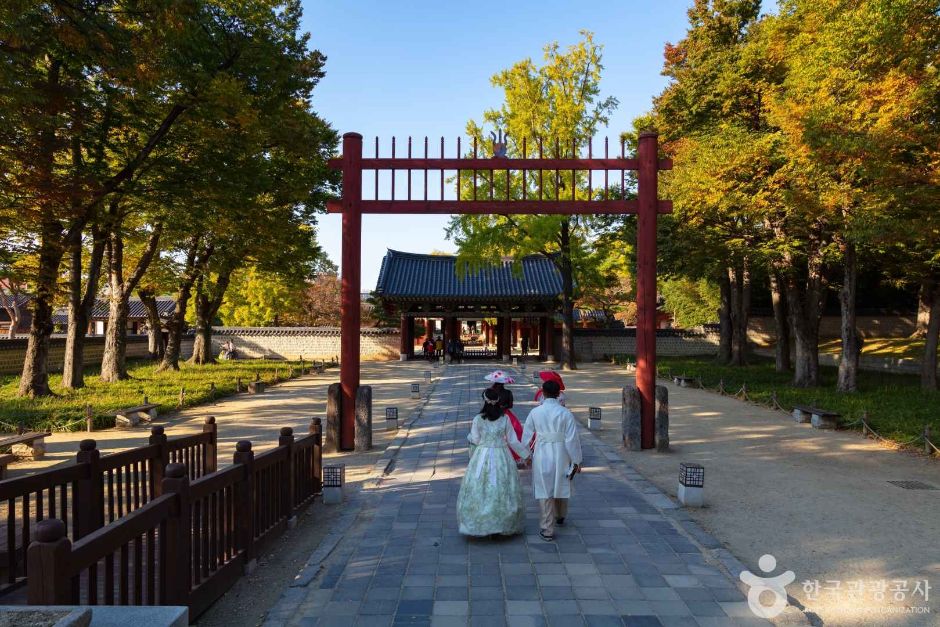
– Homepage
tour.jeonju.go.kr
A registered Historic Site, Gyeonggijeon Shrine was founded in 1410 and holds the portrait of King Tae-jo, the founder of the Joseon dynasty. The shrine was originally given the name Eoyongjeon, but was changed to its current name in 1442, the 24th year of King Sejong the Great. The structure was partially destroyed during the Imjin War (1592-1598), and was restored in 1614. Gyeonggijeon Shrine is beloved by the locals and tourists for its elegance and the lush tree groves in the middle of the city.
⊙ Jeonju Crafts Exhibition Hall (전주공예품전시관)
View detailed guide on Korea Trip Guide →

– Homepage
www.jeonjucraft.or.kr
– Tel
+82-63-281-1610
Jeonju Crafts Exhibition Hall promotes the beauty of traditional Korean crafts, and is made up of a Craft Hall, Special Exhibition Hall, and Experience Hall, Visitors can see traditional art works from master artisans as well as creative works from up-and-coming artists and designers. Visitors can also create their own handcrafted items in one of their many programs.
⊙ Jeonju Waengi Kongmulgukbap Specialty Restaurant (전주 왱이콩나물국밥전문점)
– Tel
063-287-6980
Jeonju Waengi Kongmulgukbap Restaurant, located next to Dongmun Art Street in Jeonju, is a local favorite. The restaurant serves only one dish, kongnamul gukbap, rice soup with bean sprouts. With the crunchy texture of bean sprouts and a rich broth made with anchovy and seafood, this hearty meal is perfect to enjoy after exploring nearby tourist attractions.
⊙ Jeonju Hanok Village Traditional Performance Parade (한옥마을전통연희 퍼레이드-노상놀이야)
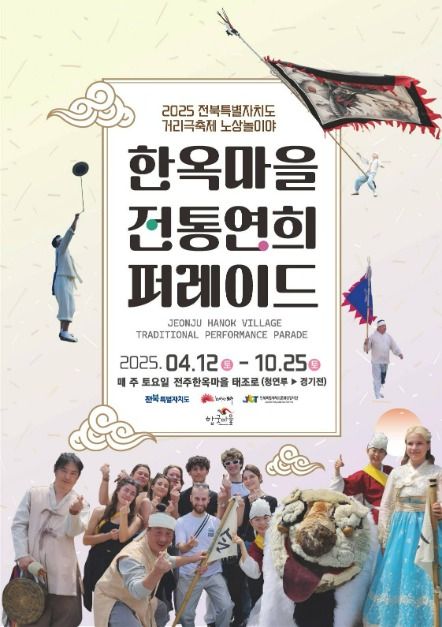
– Homepage
www.hapgood.kr
– Tel
+82-63-236-1577
The Jeonju Hanok Village Traditional Performance Parade is packed with various street performances, allowing visitors to experience Jeonju’s folk culture on the streets. During the parade, visitors can witness Jeonju Gijeopnori, a representative traditional performance of Jeonju, Madang-nori, a traditional performance featuring dance, music, and storytelling through various forms, or sing along to folk labor songs.
⊙ Kakao Friends – Jeonju Hanok Village Branch [Tax Refund Shop] (카카오프렌즈 전주한옥마을)
–
⊙ PoongNamheon (풍남헌)
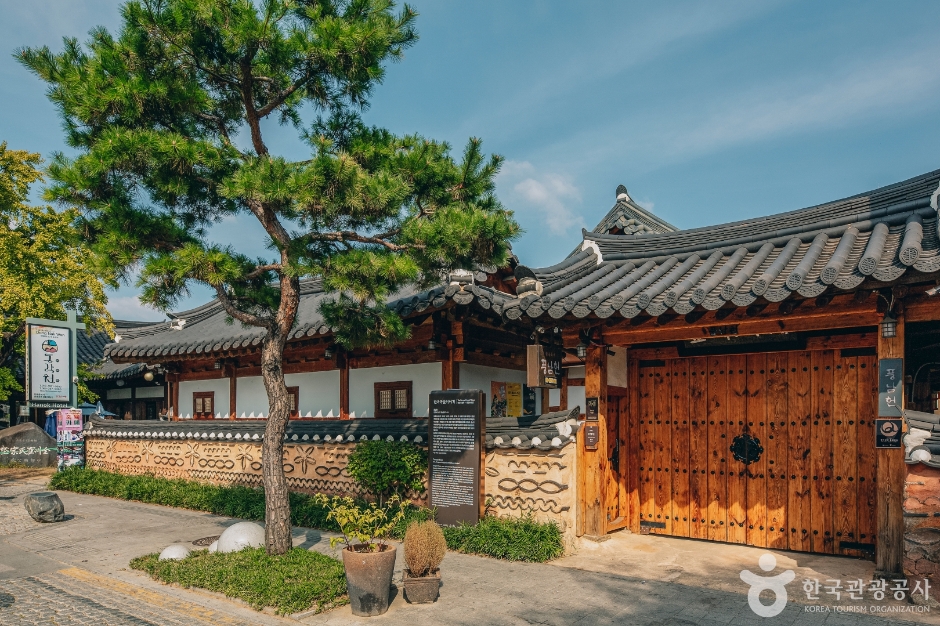
– Homepage
http://poongnam.com
– Tel
+82-63-286-7673, +82-10-2757-7673
Pungnamheon is a hanok stay in a traditional nobleman’s house in Jeonju, Jeollabuk-do. Next to the house stands a 600-year-old ginkgo tree, the guardian spirit of Jeonju Hanok Village. Two unusual features of this hanok is that there is no wood-floored hall or daecheong, and the toenmaru wooden porch is extra wide, and has a window. The floors are finished with laquered hanji (Korean paper), and the roof tiles were made in Goryeong. Old folding screens and Korean paintings complete the atmosphere of a traditional yangbang house. Guests have a chance to taste wild green tea gathered and made by the owner.
⊙ Jeonju hanok house (전주 한옥숙박체험관)
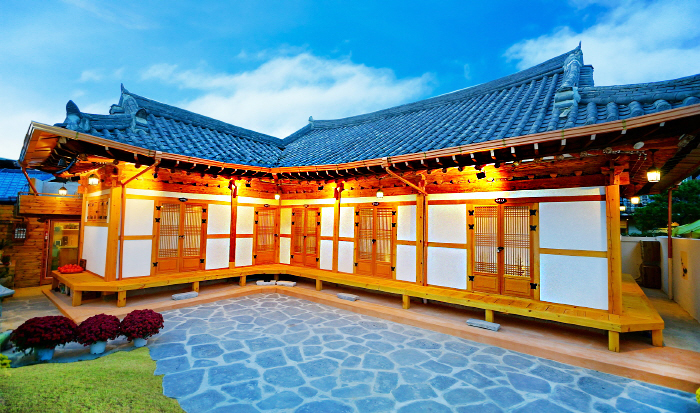
– Homepage
http://hanok114.kr
– Tel
+82-10-8669-6700
Jeonju Hanok stands at the end of a quiet alley off Eunhaeng-ro in the center of Jeonju Hanok Village, and so is a good base for exploring the village. All guest rooms are ondol-heated and have a loft space that’s popular with children. Water purifiers are installed, and a breakfast of toast, fruit and tea or coffee is provided. The outdoor yard has a table where visitors can relax in good weather.

![Himart – Gyeongam Branch [Tax Refund Shop] (하이마트 경암점)](https://ktrip.blogsailing.com/wp-content/uploads/2025/11/2890012_image2_1-768x576.jpg)

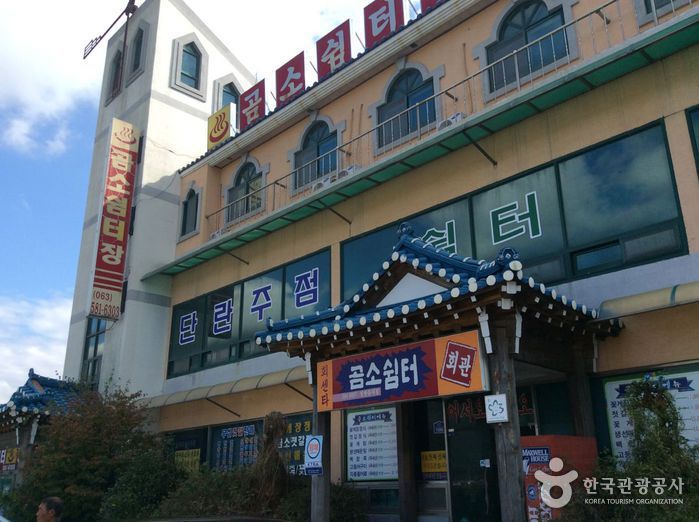
One Comment